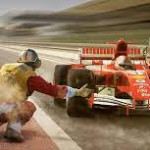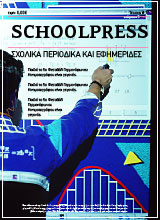By Alex Alafogiannis, Kotsias Jimmy, Angel Karagiannopoulos
Introduction
Formula 1, often referred to as F1, stands as the apex of motorsport—a global spectacle intertwining state-of-the-art technology, high-speed racing, and an ardent fan base. Rooted in the early 20th century, F1 has transformed into an elite motorsport series showcasing the forefront of engineering, aerodynamics, and human performance. This article delves into the universe of Formula 1, exploring its historical journey, the cutting-edge technology steering it, the riveting races, and its global impact.
The History of Formula 1
Formula 1′s origins trace back to the European Grand Prix motor racing of the 1920s and 1930s. However, the official FIA (Fédération Internationale de l’Automobile) Formula One World Championship, in its current form, took shape in 1950. The inaugural season featured races across Europe, marking the commencement of a global phenomenon captivating generations.
Throughout its history, Formula 1 has been graced by legendary drivers—Juan Manuel Fangio, Ayrton Senna, Michael Schumacher, and Lewis Hamilton—who left an enduring mark. Iconic teams like Scuderia Ferrari, McLaren, and Mercedes-AMG Petronas Formula One Team have contributed to the championship’s rich heritage.
The Technology Behind Formula 1
Formula 1 stands as a crucible for technological innovation, requiring continuous development to lead in racing technology. Key technological advancements in Formula 1 encompass:
1. Aerodynamics: Employing wind tunnel testing, CFD (Computational Fluid Dynamics), and advanced materials to maximize downforce and minimize drag.
2. Power Units: The core of a Formula 1 car, featuring a highly efficient hybrid powertrain with a turbocharged V6 engine and energy recovery systems, designed for both speed and energy efficiency.
3. Telemetry and Data Analysis: Real-time data collection and analysis during races enable instant adjustments to a car’s settings, making it a data-driven sport.
4. Materials: Utilizing lightweight, high-strength materials like carbon fiber and advanced alloys to reduce weight and enhance safety.
5. Tires: Collaborating with tire suppliers to maximize grip and performance.
The Thrill of the Races
Formula 1 races are renowned for their excitement and unpredictability, taking place on diverse circuits worldwide. Each race includes intense competition, high-speed chases, pit stops, and strategic maneuvers. With drivers pushing their limits and weather conditions adding an element of unpredictability, no two races are alike.
The Formula 1 calendar spans around 20 races globally, from the historic Monaco Grand Prix to the modern Abu Dhabi Grand Prix, showcasing the sport’s global appeal.
Formula 1′s Global Impact
As a truly global sport, Formula 1 boasts a massive following, broadcasting races to over 200 countries and generating substantial revenue through sponsorships and merchandise sales. Its impact extends to automotive technology, with innovations developed for the racetrack influencing production vehicles, enhancing safety, efficiency, and performance.
Conclusion
Formula 1 transcends being merely a motorsport; it’s a high-stakes fusion of cutting-edge technology, elite athleticism, and pure entertainment. As it adapts to the evolving landscape of technology and competition, Formula 1 stands as a symbol of human ingenuity and determination. Whether a lifelong fan or a newcomer, the world of Formula 1 offers something for everyone to appreciate and enjoy.




